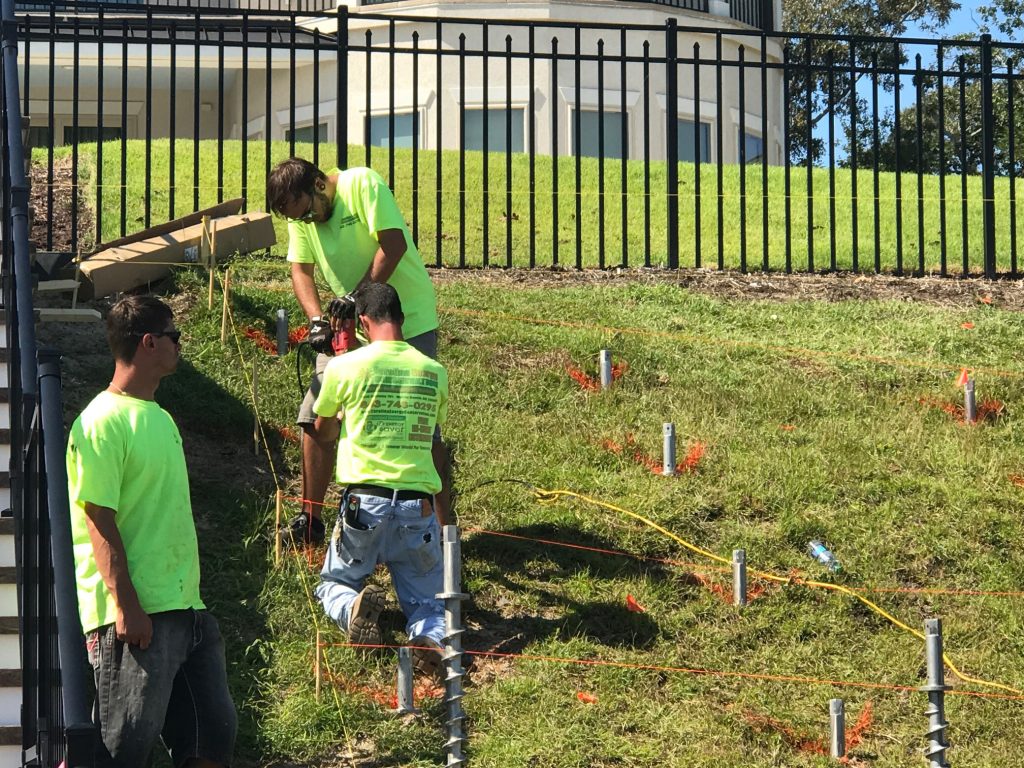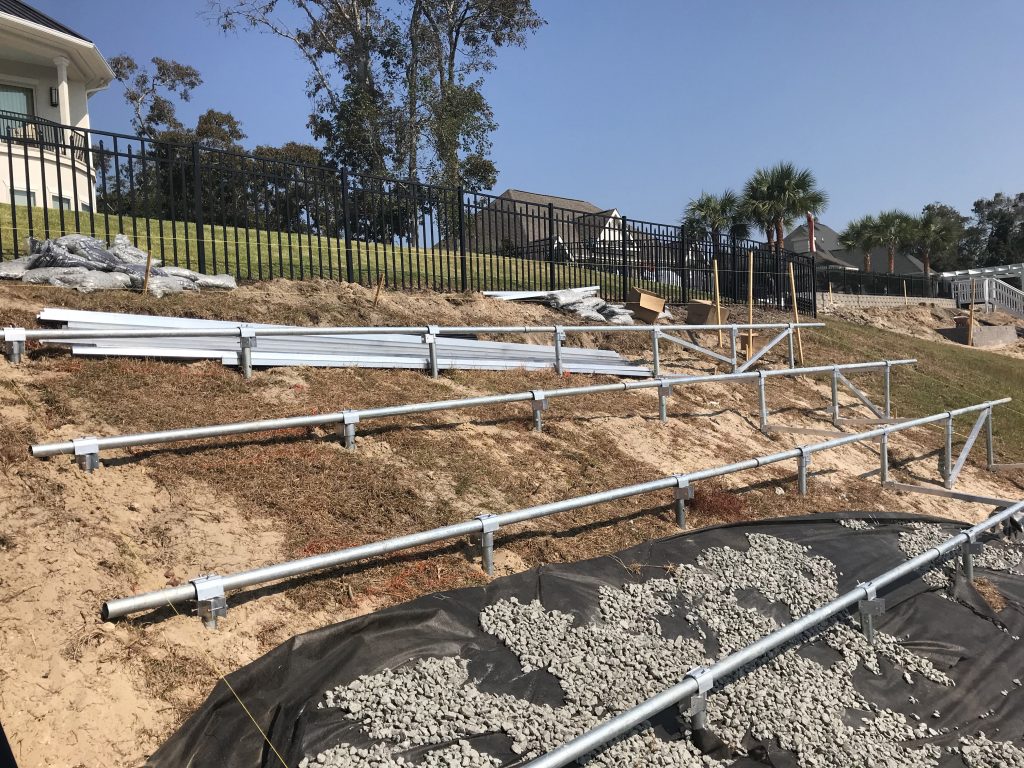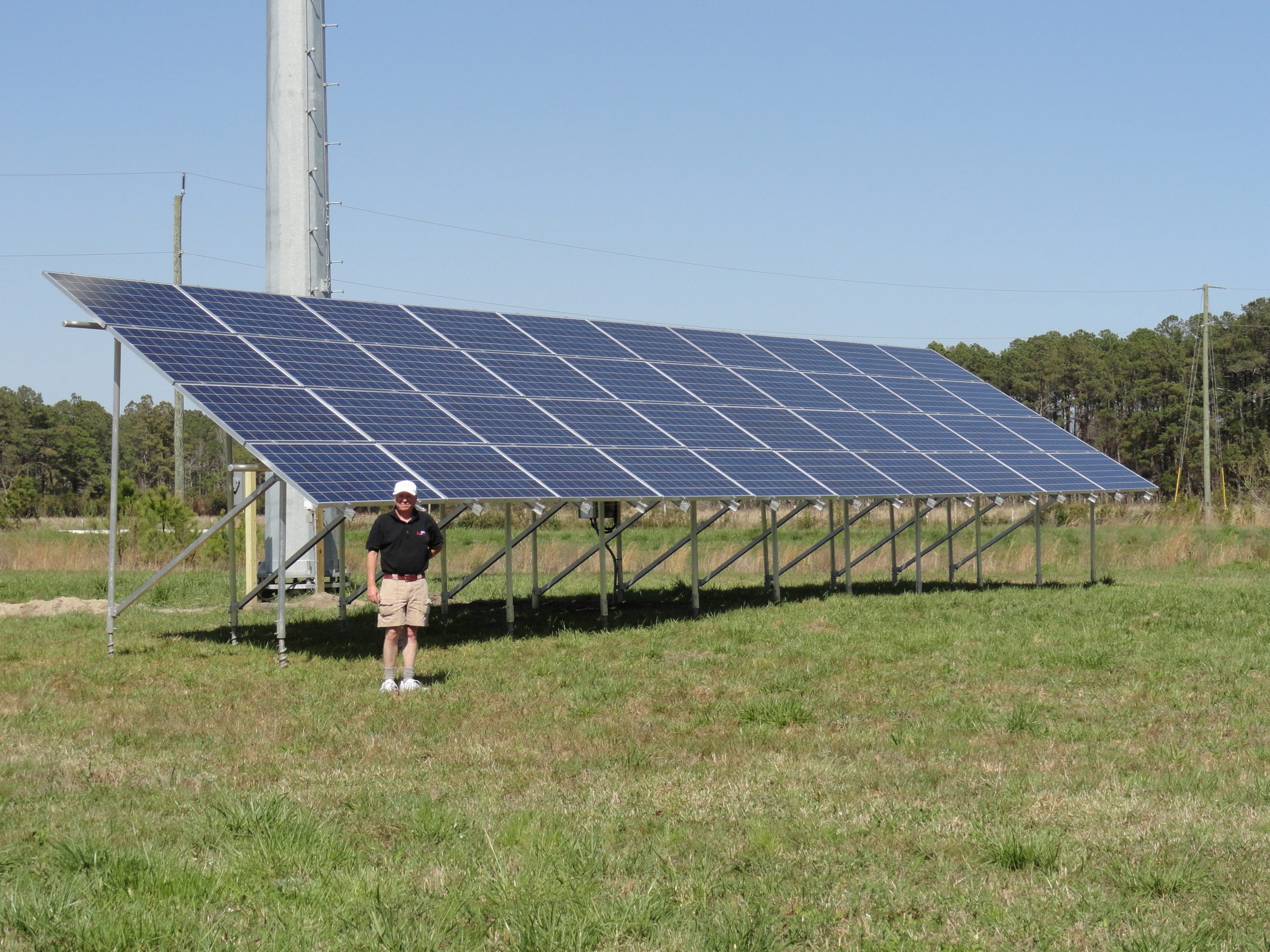The anchors ensure array stability and safety as well as positioning, to maximize energy output
Solar array ground mounts, designed to support solar panels at ground level, are increasingly common in residential and commercial settings. However, these solar arrays, which consist of metal frames or structures, must be securely anchored to the ground for stability, safety, optimal performance, longevity, compliance, theft protection, and insurance requirements.
Ground mounting ensures that solar panels remain stable and secure in adverse weather conditions such as high winds, heavy rain, or snow. Proper anchoring prevents the panels from tipping over or shifting, which could result in damage to the panels and surrounding property. Securing the structure also assures that the panels remain in the optimal position for solar exposure, maximizing energy production. Grounding and securing the solar array may also be required for regulatory compliance, and to minimize the risk of fines or liability.

Of course, the methods utilized to secure a solar array can take many forms. These can be as basic as using weighted ballasts to hold the solar panels in place for sites where soil penetration is not feasible, such as landfills or brownfield sites.
More sophisticated solutions involve the use of concrete footings or foundations. The challenge is that concrete ground mounts have higher upfront costs than other mounting systems due to the materials and labor involved. Site preparation for concrete ground mounts can be labor-intensive and require additional equipment and resources. Solar arrays are often installed in remote locations that are difficult to access with large equipment or trucks, including off-road or on hillsides.
To create a concrete foundation, the site needs to be prepared, which can involve clearing vegetation, leveling the ground, and excavating. For concrete footings, holes must be drilled. Both require concrete to be poured on-site according to the engineering specifications, and reinforcement may be added to enhance strength and durability. Once the concrete is set, the support structure and mounting systems still must be installed, followed by the attachment of the solar panels.

An increasingly popular and economic solution to this issue is earth anchors. These heavy-duty aluminum anchors are driven or screwed into the ground and attached to structures using cables, straps, or brackets. The anchors can be easily installed into sand, soil, and hardpan at a fraction of the cost, time, and labor of concrete footings.
One technology that has been used to ensure the safety and stability of solar arrays is that of Penetrators from Rhode Island-based American Earth Anchors (AEA). These are screw anchors made of heat-treated 356 aluminum that can be installed with a portable impact wrench or machine PTO drive fitted with a suitable tool. For solar ground mounting, the screw anchors, available in lengths from 14” to 46”, can provide 2,500 to 14,000 lbs. of holding power in asphalt or hard pan soil, with rack rates for wind up to 145 mph.
The 36” and 46” Penetrator earth anchors are an effective alternative to utilizing concrete footings for solar array ground mounting at essentially half the cost. Unlike the use of concrete footings, the earth anchors do not require any digging, forms, pouring, or waiting to cure. No concrete truck access is necessary. The earth anchors are easy to level by simply screwing the units down or up as needed.
The earth anchors are strong and durable yet lightweight. One aluminum, 46” long, earth anchor only weighs 10½ lbs. (4.8 kg), so can be shipped economically, easily handled onsite, and resists corrosion. A wide variety of brackets and bases expands securing options and can be customized as needed.
Although it is optional, holes can be pre-drilled in advance and the earth anchors installed to the appropriate depth using a portable impact wrench or socket extension and adapter plate on an augur. With this approach, the entire installation of a ground mounted solar array can be completed in less than 20 minutes.
Although Penetrator earth anchors are a popular choice to secure ground mounted solar arrays, there are other types of earth anchors. Selecting an optimal anchor for an array requires matching the anchor to the nature of the project and configuration of the structure, the type and characteristics of the ground, and the anticipated loads (principally wind in most cases). Key considerations include the class of soil and the project’s load capacity requirements (e.g. Factor Safety to be applied to the maximum anticipated load). Calculating the required load capacity involves many factors.
“When considering load capacity, you need to consider the soil’s real-time moisture content and compaction. In addition, you need to review the earth anchor’s root penetration, installation method, pullout load angle, and any other factors that may be unique to the installation’s particular time and place,” says Cy Henry, President of AEA.
According to Henry, besides screw anchors, other earth anchor options include bullet anchors and arrowhead anchors, which are installed using a drive rod.

No matter the setting, the need to ensure that the solar array is completely secured to the ground is paramount to the safety, integrity, and performance of the equipment. If an installer fails to secure the solar array properly, it can result in safety risks, code violations, compromised energy production, and premature equipment losses.
Solar panels are long-term investments, often with warranties lasting 25 years or more. Properly securing panels in the ground helps maintain their integrity and longevity by preventing damage from strong winds, inclement weather, and shifting or movement over time.
With ground mounted solar arrays, there can be no compromising on how well the system is secured to the ground. Earth anchors matched to the specific conditions of use will help to ensure that the structures remain securely and safely grounded, while expediting the project and saving substantially in installation and labor costs.
For more information: call 866-520-8511; visit amercanearthanchors.com or write to American Earth Anchors at 313 Pond Street, Woonsocket, RI 02895.


























